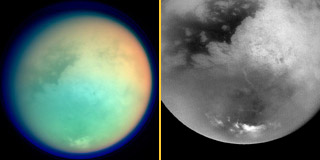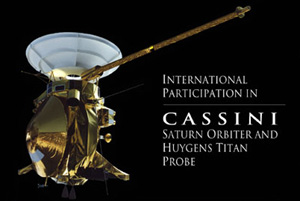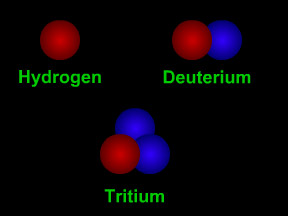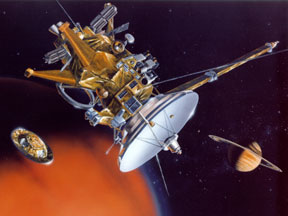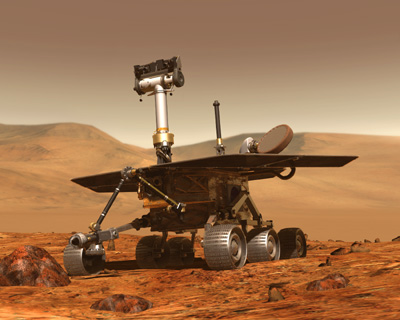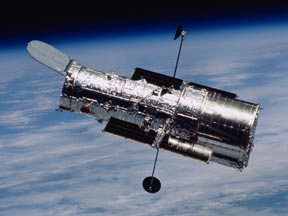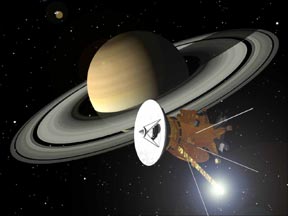Click on image for full size
Images courtesy NASA/JPL/Space Science Institute.
Cassini Titan Flyby in October 2004
News story originally written on October 28, 2004
The robotic Cassini spacecraft flew by Saturn's moon Titan on October 26, 2004. Titan is Saturn's largest moon, and has the thickest atmosphere of any moon in our Solar System.
Cassini captured what are by far the best images of Titan to date. The images show regions of dark and bright materials that may indicate a surface shaped by multiple geologic processes, but scientists are not yet certain what to make of the patterns observed. An assortment of ten instruments on Cassini recorded data about Titan during the flyby. One detected unusual proportions of nitrogen isotopes in Titan's atmosphere, possibly providing clues about the "age" of that atmosphere. Another instruments, the ion and neutral mass spectrometer, detected a diversity of hydrocarbons (including benzene and diacetylene) in the moon's upper atmosphere.
Cassini passed within 1,174 kilometers (730 miles) of the Titan during this close encounter. Cassini, which is in orbit around Saturn, will fly past Titan 44 more times in the next four years!
The Huygens lander, which is currently riding piggyback on Cassini, will detach from the "mothership" and drop to a landing on Titan in January 2005. Some of the measurements of Titan's atmosphere that Cassini made on this flyby will help scientists better characterize the moon's atmosphere. The more scientists know about Titan's atmosphere, the safer they can make Huygens' entry into and flight through that atmosphere.


